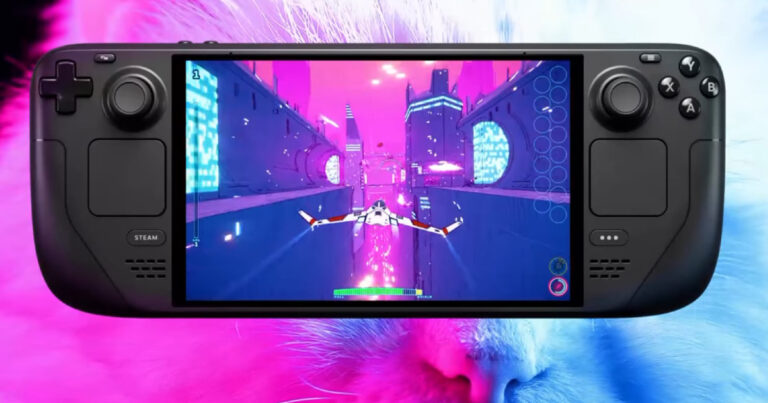It feels like it was only a matter of time before the Steam Deck PC gaming handheld line eventually landed in Australia. And that time is finally here. Well, at some TBD time in November 2024.
Still, given the understandable concerns over grey importing a Steam Deck when it comes to warranty and extra costs, it’s great to see a more straightforward way to buy the popular handheld in Australia. You can buy a competitively priced Steam Deck LCD 256GB model for $649. Alternatively, it costs $899 for the Steam Deck 512GB OLED and $1,049 for the Steam Deck 1TB OLED.
Considering the 512GB and 1TB OLED models were priced, at best, around $1,030 and $1,230 on Amazon at the time of writing, respectively, that’s very competitive pricing, more so in the face of the $1,599 Asus ROG Ally X. Game on.
We sat down with two of Valve’s Steam Deck designers, Lawrence Yang and Yazan Aldehayyat, ahead of the announcement that Steam Deck is coming to Australia. While you can stop reading now if you’re hoping for any scoop on Half-Life 3, Yang and Aldehayyat had plenty of insights about making the Steam Deck, what Valve hoped to include in the Steam Deck OLED and couldn’t, and plenty more.
Steam Deck Australia release date
Steam Deck units can be wishlisted right now and are available for ordering in November 2024.
There’s no specific date, alas, but we do know that all Steam Decks are direct purchases from the warehouses where they’re made. “We wanted to sell direct from Steam,” said Yang. “We could have gone with a third-party distributor, but we really wanted to have that direct relationship with the customer.”
So, why exactly did it take so long for Steam Deck to be sold in Australia? “Now is the right time because it’s the soonest we could do it,” said Yang. “It takes a very long time to get everything buttoned up in terms of financial due diligence, and then setting up all the logistics and warehousing and shipping and returns and all that kind of stuff.”
“To add to that, Australia was on the list of countries we wanted to be in during the first day of even designing the product,” said Aldehayyat. “It was designed to meet Australian requirements. It was certified the same time the US and Europe and Asia was certified. It was just that we did not have a sales channel in Australia, we didn’t have a way to deal with returns. We didn’t have a business presence really, from a hardware standpoint, and so it just took a long time to get all that set up.”
Steam Deck vs ROG Ally and other competitors
Steam Deck is hardly the first gaming handheld, but it is the first mainstream gaming handheld PC. Since the popular launch of the Steam Deck, there’s been competition from the MSI Claw, Ayaneo products, and the Asus ROG Ally. Given the frequency of releases for competitors, I characterised the PC gaming handheld market as an arms race to get the discussion started.
“I wouldn’t characterise it as an arms race,” said Yang. “A lot of people are entering the category, which is really exciting for us. When we originally shipped the Steam Deck, our hope was people would see this is a new kind of thing. It’s not a laptop and it’s not a console handheld, but it’s a PC as a handheld. And our hope was that we would be able to kickstart this category and there would be more of them very soon.
“And that has happened. We’re really excited to see a lot of folks making these kinds of things. And they’re making interesting design decisions and trying different things out to differentiate, whether it be on input or performance or display. It’s really cool and we think it’s a very PC ecosystem kind of thing to happen. We don’t think that there only has to be the Deck; there’s room for a lot of other things.”
“We’re sort of in that phase now,” added Aldehayyat. “I think hardware is primarily about solving problems for users. We really want to be able to let you play your Steam games anywhere you want. Steam Deck has improved that significantly, but we don’t view it as a solved problem yet. We still think that there’s a lot of room for improvement. So seeing that we’re not the only people working on that now is amazing.
“We love the idea that a lot of companies are working on improving the experience of playing games outside of your office or away from your computer. So seeing people try all kinds of stuff and seeing what sticks and what doesn’t, and just improving that for users, users should be very excited about it. We’re very excited about it and we’re kind of curious to see where that ends up being.”
I explicitly mentioned that I’m in the process of reviewing the ROG Ally X, expressing frustration that my Steam Deck muscle memory is so used to reaching for a touchpad that isn’t there on the Ally. “We would love if other companies use touchpads,” said Aldehayyat. “We feel like that’s a pretty cool technology that would benefit PC gaming, that we’d love for more people to adopt.”
On the ROG Ally X, my choices for navigating windows are to use a joystick as a poor mouse replacement, connect a Bluetooth keyboard and/or mouse, or plague the touchscreen with my grubby fingerprints. “That’s definitely one of the benefits of the trackpad, especially for mouse-based interactions,” said Yang, when I shared my frustrations. “Whether it be a game or a desktop situation, the trackpad is definitely much better than trying to touch the screen with your finger or trying to use your thumb stick as a mouse. Both of those are not great experiences.”
Valve discussed VRR for the Steam Deck OLED
One of the perks of the ROG Ally X is a variable refresh rate (VRR) display. Even though it’s not an OLED screen, the ROG Ally X display looks great and has a clear smoothness advantage over both the original Steam Deck and the Steam Deck OLED. When I asked the Valve designers about what they wish they could’ve done for the Steam Deck OLED, VRR was the first thing that sprung to mind for both designers.
“With the LCD [Steam Deck], it was obviously the display,” said Aldehayyat. “We really wanted a better display and, thankfully, we got that. Maybe I shouldn’t say this, but VRR is a thing that we’ve been asked a lot about and I can say that we also wanted it really badly for the OLED ones. We just couldn’t get it done on time. So that’s probably a feature that is on the top of our list of things that we would like to do.”
“What we said when we launched the OLED was that this is not a second-generation device,” added Yang. “This is what we would say is what we wish we had shipped originally for Steam Deck [LCD], and I think that has been borne out.”
VRR wasn’t the only thing on Valve’s Steam Deck wishlist, though. “The battery life on Steam Deck, I think there’s a general consensus that’s the best in its class, but I would really love to have it be better,” said Aldehayyat. “There’s a lot of things that just physics was not on our side for, but I would say VRR was the one that was just more about, we just could not get technology done in time for the product launch, but it was something that we really wanted in.”
Don’t expect Valve to follow the trend of yearly handheld releases
The Steam Deck 2 is about as much a well-kept secret as Deadlock, albeit the latter’s existence is official now and the former is acknowledged but still sees quite a way off. When I expressed concern that Steam Deck competitors were seemingly all too willing to release hardware refreshes after a year, Yang clarified that Valve isn’t interested in that approach for Steam Deck.
“It is important to us, and we’ve tried to be really clear, we are not doing the yearly cadence,” said Yang. “We’re not going to do a bump every year. There’s no reason to do that. And, honestly, from our perspective, that’s kind of not really fair to your customers to come out with something so soon that’s only incrementally better. So we really do want to wait for a generational leap in compute without sacrificing battery life before we ship the real second generation of Steam Deck. But it is something that we’re excited about and we’re working on.”
Steam Deck design philosophy
I asked the Steam Deck designers whether the initial design philosophy for the Steam Deck was a Nintendo Switch for PC gamers, and that was clearly an oversimplification on my part. “No, I wouldn’t say that. Having been there during the early phases, it was more like, ‘I’ve been playing this game on my PC, but I have to be in front of my PC to play it, and I would love to play able to play it on my commute. Or I would love to be able to play on a plane, or I would love to be able to play outside. Or in the three months that are nice in Seattle, I would like to be outside playing my game, not in my office.’
“And so the pitch of the Steam Deck was basically: ‘How do I play my Steam games away from my PC?’ That is the problem we were trying to solve. And there are people [at Valve] who were like, ‘I just want that for me.’ The point wasn’t even to make a product out of it. It was just, let’s see if you can actually make something that I would want to use for that purpose.”
Yang expanded on the idea of making something that was more PC than console. “No, part of it is it’s just a PC, so we do everything we can to get out of people’s way. So whatever they want to use it for, however they want to use it, you should be able to.”
Steam Deck hardware modifications
As a curious but trepidatious hardware tinkerer who’s far too used to encountering ‘warranty void if opened’ stickers on devices, it’s refreshing to hear that the Steam Deck was designed (and has continued to evolve) with hardware modding in mind. “I could say that repairability was something that was intentional from the very beginning of Steam Deck,” said Yang. “Mod-ability was a surprise to us, but the popularity of the modding community was not something we expected.
“But it really was born from the fact that the Steam Deck is so repairable, it’s so easy to take apart. When we made the Steam Deck OLED, one of the things that we improved between LCD and OLED is the repairability. Even the little things. You take the back off and all the screws are the same, so you don’t have to remember these two were here and these six are in other places. And just making bits and pieces of the inside easier to get to. It has been nuts to see how many people are willing to actually take the entire thing apart, including the display so they can do a shell swap. That’s dedication and also very scary.”
The importance of Valve games being playable on Steam Deck
As much as the Valve gaming fan in me wanted to ask questions about past, current and upcoming first-party titles, there wasn’t really much point. Still, I did ask about the importance of first-party games, back catalogue and whatever’s coming, being able to run on the Steam Deck.
“I would say pretty important,” said Yang. “We all sit in the same building, so we’re always talking to folks, and both folks on the Dota team and Counter-Strike team have been working on controller support. Some of those games have never been made to work with a controller so it’s to variable success. I think that it’s definitely a goal, especially for any future titles or not-shipped-yet titles, our team has made sure that they have dev units that they can use to test with.”
Compare handheld gaming consoles
Still not sold on the Steam Deck? It might be one of the best handheld gaming consoles available but it's not your only option.
Gaming handheld | Display | Weight | Storage | Price | View more |
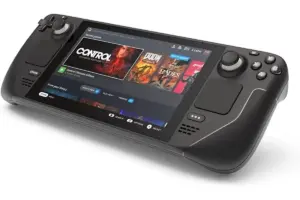 Steam Deck Steam Deck | 7/7.4-inch 1280x800 IPS or OLED | From 639 grams | 64GB, 256GB, 512GB, MicroSD |
From$705
| Shop Now |
|---|
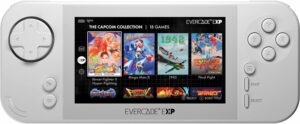 Evercade EXP Evercade EXP | 4.3-inch 800x480 IPS screen | 270 grams | 4GB |
From$190.82
| Shop Now |
|---|
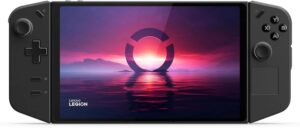 Lenovo Legion Go Lenovo Legion Go | 8.8-inch 2560x1440 IPS | 640 grams | 512GB, MicroSD |
From$1348
| Shop Now |
|---|
 Nintendo Switch Nintendo Switch | 5.5/6.2/7-inch 1280x720 IPS or OLED | From 276 grams | 32GB, MicroSD |
From$329
| Shop Now |
|---|
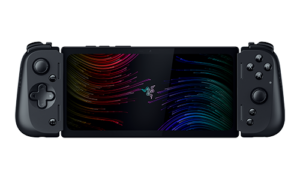 Razer Edge Razer Edge | 6.8-inch 2880x1080 OLED | 401 grams | 128GB, MicroSD |
From$889.95
| Shop Now |
|---|
 Backbone One Backbone One | N/ARequires smartphone | 138 grams | N/ARequires smartphone |
From$125
| Shop Now |
|---|
